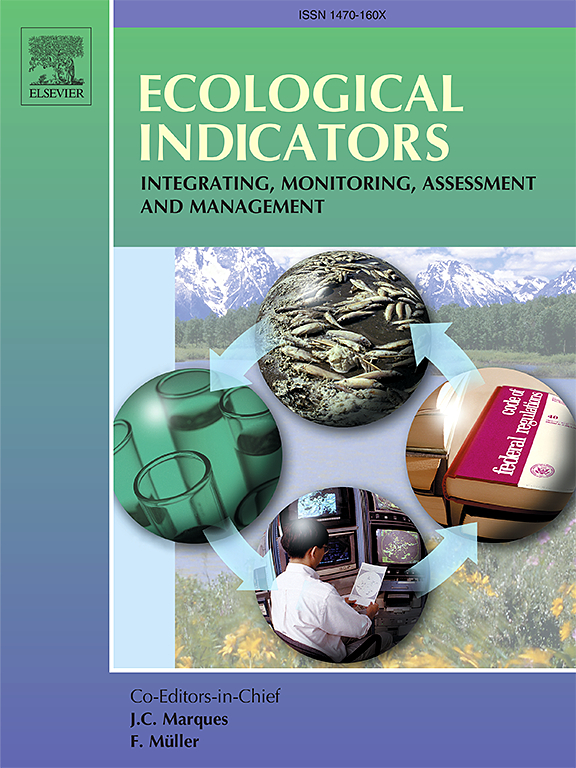Development of a rainfall Stability Index using probabilistic indicators
Machiwal, Deepesh , Jha, Madan Kumar , Gupta, Ankit
2020-08-01 null null 115(卷), null(期), (null页)
Temporal variability of rainfall affects earth's climatic systems, and it has a profound impact on the ecosystems, agriculture and society. In this study, a Stability Index (SI) is developed to evaluate long-term rainfall stability using probabilistic indicators [Reliability, Resilience and Vulnerability (RRV)] and geostatistical modelling. Developed index is applied to an Indian arid region using 1979-2013 annual rainfall data. The efficacy of the SI is examined by comparing it with a conventional dispersion statistic viz., coefficient of variation (CV) of the rainfall time series. The 'low' to 'moderate' ranges of Reliability (0.29-0.49), Resilience (0.27-0.50) and Vulnerability (0.35-0.49) suggest that the rainfall in the study area is at a high risk of insufficiency. There are 'strong' to 'moderate' correlation among all the three indicators. It is found that the RRV indicators and SI have no spatial trend and follow normal distribution. 'Spherical', 'circular' and 'exponential' are adjudged to be the best-fit geostatistical models. The scatter plots of RRV indicators and CV, Spearman's rank correlation and Student's t-test revealed that SI precisely account for the long-term stability of annual rainfall. SI is superior to the conventional measure of dispersion as the former addresses risk in terms of frequency of being higher than the mean rainfall and thereby considers ability to return from unsatisfactory to satisfactory condition. Also, the development of SI involves straightforward computation, ease of rainfall data availability at local and regional scales and less time-consuming analysis. It is concluded that the SI based on probability indicators can be a useful tool for analyzing spatio-temporal dynamics of rainfall and delineating prioritized areas for rainwater management at community, river basin and regional scales. The RRV concept could be further extended to solve future environmental problems under changing climate and socio-economic conditions.
相关推荐
- Impact assessment of indigenous field-level water storage structure (diggi) on agriculture in the great Indian desert [2020-08-01]
- Exploring temporal dynamics of spatially-distributed groundwater levels by integrating time series modeling with geographic information system [2020-08-01]
- Trends and homogeneity of monthly, seasonal, and annual rainfall over arid region of Rajasthan, India [2020-08-01]
- Evaluating Cost-Effectiveness of Rainwater Harvesting for Irrigation in Arid Climate of Gujarat, India [2020-08-01]
- GIS-based water balance modeling for estimating regional specific yield and distributed recharge in data-scarce hard-rock regions [2020-08-01]



